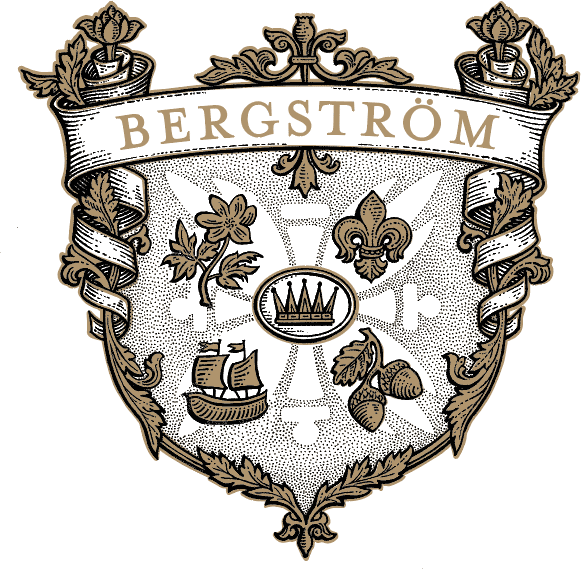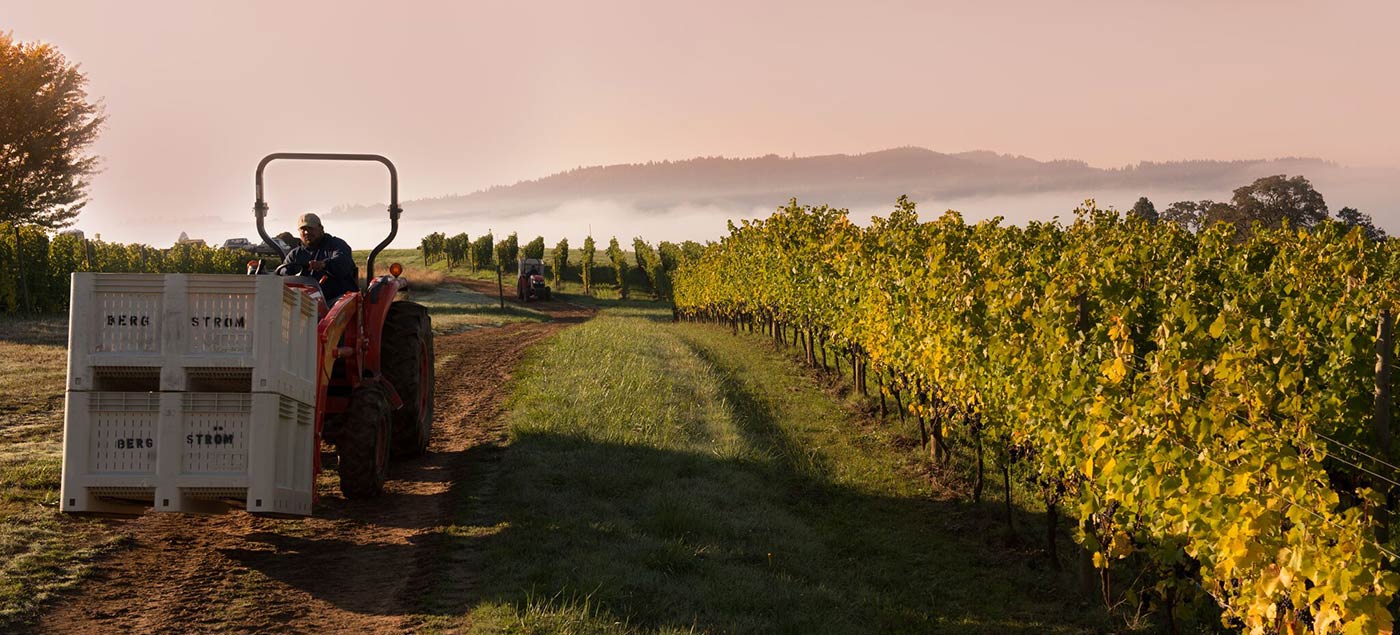It is cold and dark and wet in the Willamette Valley this week, not unlike most of winter here. The winter weather has flirted with snow and frost and freezing rain, but for the most part, in the Willamette Valley, it has been mild and wet. Occasionally the skies open to remind us all of the color blue. The Cascades are seeing large amounts of snow and four days ago, at the winery, it was clear and crisp and I could see the snow-capped peaks of the Cascades on the left of me and the snow-capped peaks of the Coast-Range to the right of me and the enormous brown and black and grey swath of the Willamette Valley in front of me. Even in winter it is gorgeous here. Wet, but gorgeous.
Beauty is all around us and it is important to remark the seasonal happenings as they present themselves. After all, this journal is about sharing a slice of life from our corner of the globe. One of the seasonally curious sites to behold in the Willamette Valley during the winter happens inside of the Hazelnut orchards. They begin to sprout interesting, worm-like, dangling flower clusters which hang from every branch. These almost neon yellow curly worm-like ornaments add a wondrous flair to these brown, leaf-strewn, symmetrical orchards this time of year. And when the occasional sunburst splashes upon the trees; the brown of the leaves, the yellow of the worms and the electric green of the moss and ferns and winter cover-crop growing from the gnarled branches and ground is something to behold and walk inside of and celebrate. Hazelnuts (Filberts) don’t get celebrated enough…but what a great nut with so much flavor! Maybe if there was a brave new cocktail from a savvy mixologist that highlighted the taste of the Hazelnut, then would the masses embrace it. But then again, who needs nutty chunks in their cocktails?
Inside of the winery, we are busy racking a couple of small lots of Pinot Noir that are a little “stinky.” Racking is the name we give to the operation of moving wine from one vessel to another, usually removing the liquid of the wine from the solid or semi-solid sludge of its sediment (please forgive the mundane information for those of you who find it mundane….I assume that people are reading this who hail from all curvatures of the earth and from all walks of life and professions here, so why not?) The sediment is usually made up of dead yeast cells and bacteria as well as the remnants of fruit pulp, seeds and other fruity things. This sediment, which we call “the lees” can be a wonderful nutrient-rich pillow for the wine to rest on during its winter and spring slumber. Wine can gain in body and mouth-feel and richness from the lees , and you have probably heard how some Chardonnays are stirred to roust the lees, which is just one sort of manipulation to intentionally extract goodness from this sedimentary layer in our wine barrels and tanks. The lees are also a great source of reduction, in that they tend to help protect the wine from oxygen-exposure, something that a barrel naturally lets in as part of its function as an oxygenating concentration vessel. Sometimes, this phenomenon can go too far and a wine can become reduced, or almost completely lacking in oxygen, and thus…..can become somewhat smelly. The smell that comes from a wine that is lightly reduced usually is of low toned egg or sulfur. This is sometimes very desirable, because we know that the wine is protected, and can someday be resurrected from its state of reduction with the introduction of air to once again liberate the fruity, floral aromas that we seek. This reduction can also sometimes become undesirable and a wine can sink into a deep state of reduction where the fruity and floral aromas are obscured by a cloud of stink so strong that we grasp only the cabbage, burnt match-stick, rubber and burnt popcorn aromas that are typical of one of many sulfide compounds. That is not good, but thankfully we are not dealing with that phenomenon this year.
Thankfully we are simply at the pleasant “lightly reduced” state with two of our young-vine vineyards which began to stress-out during last year’s extremely long and challenging harvest. We are removing the wines from barrels, saving their lees in a separate vessel, and introducing the wines to a light oxygenation which will help them through this tough time. There is much to be said about the exciting 2010 vintage wines…but that is for another time.
Usually, this is the time of the year that I start my sales travels but January holds little of that for me this year. We do have an amazing year coming up though with the: “ World of Pinot Noir” in California, a BBQ road-trip through Mississippi, A winemaker’s dinner at the historic “Silcox” Hut and Timberline Lodge on top of Mount Hood in Oregon, A special week in Chicago with our wine club members and a few exclusive dinners, The “High-Museum Wine Auction” in Atlanta Georgia, Seattle car trips (we have started distributing ourselves in Washington!!!), Charlie Palmer’s “Pigs and Pinot” in Healdsburg California, A huge North Carolina!, the “Taste of Vail” in Colorado, the always astounding and mesmerizing “Pebble Beach Food and Wine” in California, and a very special surprise trip that will help to make one special person’s dreams come true. …. and all of that in the next three months!!!!!! With all of this travel, eating, tasting, sightseeing and activity above and beyond our very busy winemaking schedule and our vineyard demands (pruning, compost building etc…)……. It is going to be a busy beginning of the year! But it will be a very good beginning of the year too! I look forward to sharing it with you.
Cheers! Josh.




